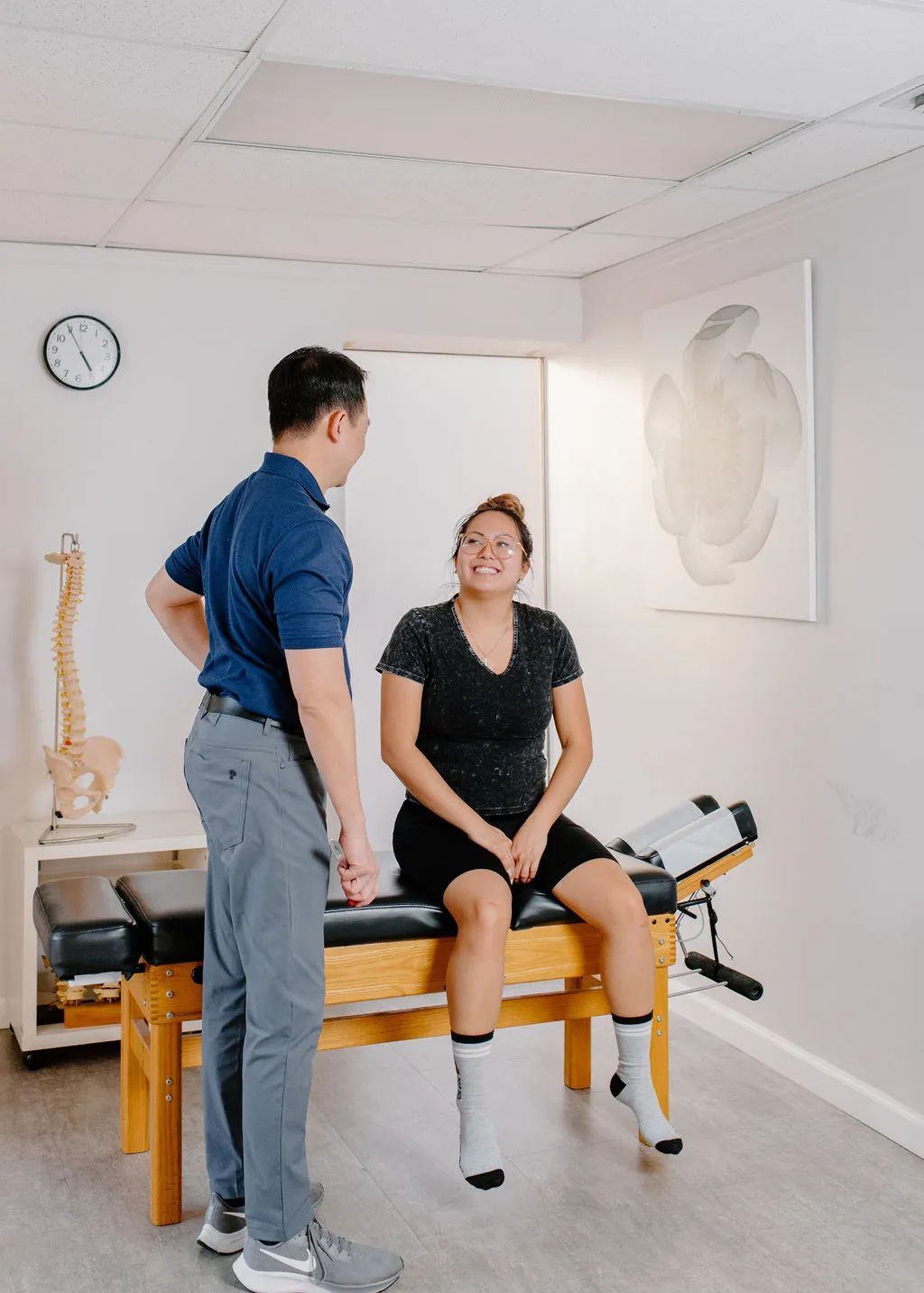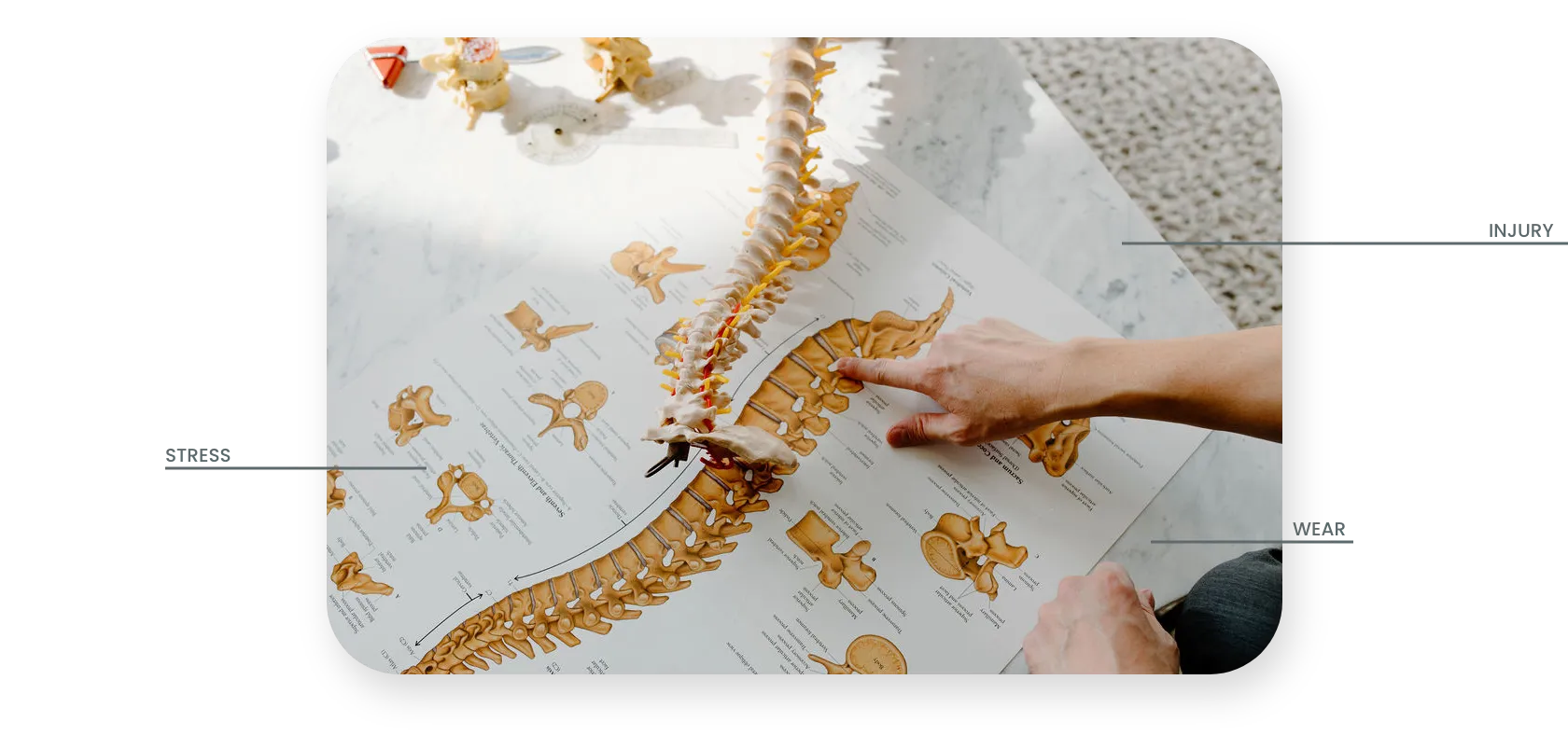Chiropractic Care
VERSATILE TECHNIQUES FOR EFFECTIVE ATTENTIVE CHIROPRACTIC TREATMENT.
A HIGHER QUALITY OF LIFE
Since opening our doors in 2001, our goal has been to help each patient live as free from mobility restrictions and pain as possible. Our concierge approach to chiropractic care places an emphasis on customizable approaches and results-driven treatments, and our services include:


GENERAL CHIROPRACTIC CARE
CHIROPRACTIC ADJUSTMENTS
SCIATICA TREATMENT
BACK PAIN TREATMENT
WHIPLASH TREATMENT
JOINT PAIN TREATMENT
INDIVIDUALLY TAILORED
TECHNIQUES
Our doctors have decades of experience in a variety of safe, gentle, and effective chiropractic manipulative techniques, as well as gentle instrumentation. Our goal is to work with you to find and address the root cause of pain so that you can live a happy, healthy, and mobile life.
WHAT IS
CHIROPRACTIC CARE
Chiropractic care deals with the close relationship between your central nervous system (CNS) and the rest of the body. The CNS uses the spinal cord to communicate with the rest of the body, and any interference with this communication prevents us from functioning optimally. We call this interference the subluxation. Finding and removing the subluxation is the goal of chiropractic care.
THE CENTRAL NERVOUS SYSTEM EXPLAINED

Think of your spinal cord as an information highway. It controls everything in our body-what we see, hear, touch, feel and vital functions. Messages are constantly going back and forth between the brain and body to keep everything functioning properly. As chiropractors, we make sure that these messages are being delivered effectively by targeting and treating any obstacles caused by stress, injury, or wear.
WHAT TO EXPECT FROM TREATMENT
Every person will have a different experience with their first spinal adjustment, but common responses include:
DECREASED PAIN
IMPROVED MOBILITY
IMPROVED SLEEP
IMPROVED DAILY ACTIVITIES
MILD SORENESS (RARE)
Your first spinal adjustment is only the beginning of your healing process.
THE BENEFITS OF CHIROPRACTIC CARE
EVERYONE STANDS TO BENEFIT FROM CHIROPRACTIC CARE, NOT JUST PEOPLE WHO ARE EXPERIENCING PAIN OR DISCOMFORT. WITH THAT SAID, TREATMENT CAN REALLY HELP TO ALLEVIATE PAIN AND IMPROVE MOBILITY. BY DETERMINING IF YOU HAVE SUBLUXATIONS AND HOW IT MAY BE CAUSING YOUR SYMPTOMS, WE ADDRESS THE UNDERLYING CAUSE RATHER THAN JUST TREAT SYMPTOMS.
THOMPSON DROP
The use of a specialized table with moving parts to assist during the chiropractic adjustment.
CHIROPRACTIC TECHNIQUES EXPLAINED
Here’s a quick overview of some common chiropractic techniques.
DIVERSIFIED
A highly effective and traditional hands-on manual chiropractic technique.
GONSTEAD
A highly specific manual chiropractic technique that focuses on biomechanics and structure
ACTIVATOR
A gentle, non-force and specific chiropractic technique that utilizes instrumentation. It is an excellent technique for the very young and elderly.
UPPER CERVICAL
This is the oldest chiropractic technique in chiropractic that focuses on the first two vertebrae of the spine.
ACTIVE RELEASE TECHNIQUE
A soft tissue manipulative technique developed by the team chiropractic physician of the NFL team Denver Broncos. This highly effective technique focuses on scar and fibrotic soft tissues that are the causes of pain and altered body mechanics. Our chiropractic physicians have extensive training and certification in this technique.
Schedule Your Consultation
Whether your pain and discomfort is longstanding or new, we are a Tampa chiropractor who will work with you to get to its root cause so that you don’t just feel well, but are well. Set up a consultation with us to get started.
Consultation Form
We will get back to you as soon as possible.
Please try again later.
